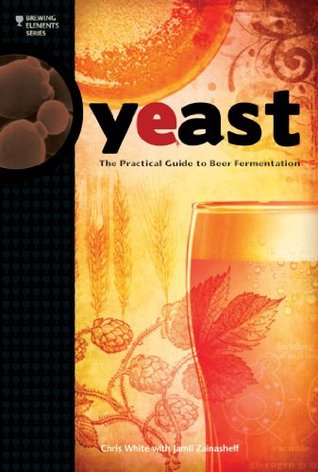More on this book
Kindle Notes & Highlights
by
Chris White
Started reading
August 22, 2014
We think of the brewing process as divided into two stages or phases: the hot side and the cold side. The hot side is the cooking (or brewing) process, which takes place in the brew house. The hot side involves recipe design, milling, mashing, and the boiling of the wort and hops. The product of the hot side, the hopped wort, provides the food for yeast in the second phase, the cold side. The cold side begins as the brewer cools the wort, adds yeast, and fermentation takes place. Depending on the recipe, the yeast will metabolize roughly 50 to 80 percent of the wort extract, with the remainder
...more
You need to get into the habit of counting your yeast. At the very least, measure the volume or weight of the yeast you pitch every time you brew. Measure their viability on a regular basis, also. Using the same number of cells at the same level of viability every time is important in developing consistent beer.
One thing many brewers do not know is that the type of sugars present can also affect fermentation flavors. For example, fermentation of wort high in glucose produces beers with higher than normal concentrations of esters (particularly ethyl acetate, which tastes like adhesive or solvent, and isoamyl acetate, which tastes like banana). Conversely, wort high in maltose results in lower concentrations of these esters. The higher the starting gravity, the more pronounced this effect.
Oxygen is a critical factor in yeast growth, and it is often the limiting factor. Yeast use oxygen for sterol synthesis. The yeast use sterols to keep the cell walls pliant, which is important to cell growth and overall cell health.
Prior to fermentation, aerating the chilled wort is necessary to promote yeast growth. We consider 8-10 ppm oxygen the minimum level, with the amount of oxygen necessary varying by yeast strain and other factors, including specific gravity. Beers with higher yeast demands, such as lagers and high-gravity beers, tend to require more oxygen.
An all-malt wort is an excellent source of nitrogen, minerals, and vitamins. It supplies most of the vitamins yeast need for proper fermentation, such as riboflavin, inositol, and biotin. Yeast also require several key minerals, such as phosphorus, sulfur, copper, iron, zinc, potassium, calcium, and sodium.


